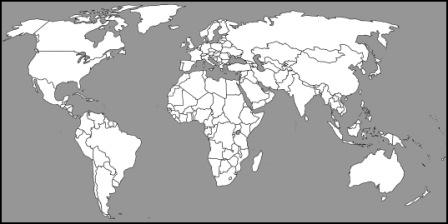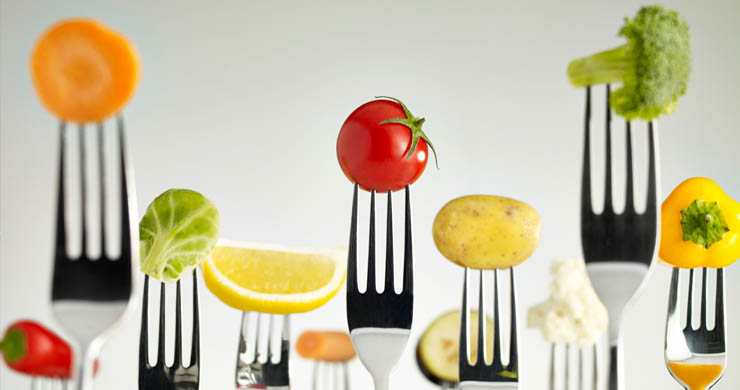Food: Scandals!
Food Scandals
Over the last few months the news has been full of food, but not in a way that gives anyone much of an appetite...
It began in January when food testers discover that millions of burgers being sold in UK supermarkets weren’t all that they seemed to be. It turns out that some burgers, lasagne and minced beef actually contained horsemeat!

A huge amount of food has been thrown away by supermarkets and shops. Abattoirs (where animals are slaughtered for food) and food factories have been shut down and several people have even been arrested.
Here’s a question...
If the UK produces hundreds of thousands of tonnes of beef each year, how is it that we don’t know where our meals are coming from, or even what animal provided the food on our plates?
This issue of Geography in the News will look at the food industry in the UK and Europe:
- The recent horsemeat scandal.
- Where food comes from (and a survey that shows that many of us don’t know as much as you might think!).
- Some radical ideas which might change the way our food industry works in the future.
The Horsemeat Scandal – What, Where and When?
You might think that the burger or lasagne on your plate is made from beef that came straight from the farm to the shop. After all, in lots of UK supermarkets you can watch the butchers preparing the food in the shop.
It turns out that a lot of the time the story isn’t so simple! Our food supply chains can be very, very complicated...
Brain box...
A ‘supply chain’ is the system that moves a product from the supplier (in this case the farm) to the customer. In the case of our tasty beefburger the simplest food supply chain might be:
Farmer → Butcher → Customer
These days many butchers do not slaughter their own meat, but use an abattoir instead, which gives us:
Farmer → Abattoir → Butcher → Customer
The recent stories about horsemeat in our supermarkets have shown that food supply chains have become a lot more complicated.
Before we look at one example of a complex food supply chain that bought horsemeat to British stores, let’s look at how the scandal emerged:
January 2013
-
Beefburgers produced by in Ireland are found to contain horsemeat.
-
The company says that it didn’t know and blames its suppliers instead.
-
Supermarkets, including Aldi, Tesco, Lidl, Iceland, Sainsbury’s, Asda and Waitrose, stop selling some of their frozen food.
February 2013
-
Food from more producers in Ireland, UK and France are found to contain horsemeat.
-
Meat-traders, abattoirs and meat-factories are raided by the police, included Farmbox Meats Ltd near Aberystwyth.
March/April 2013
-
Horsemeat in Findus lasagnes, sold in the UK, is traced back to abattoirs in Romania.
-
The Romanian company says that the French food producer knew that it was buying horsemeat when the order was placed.
Brain box...
What is the problem with horsemeat?
So why has horsemeat in food caused such a scandal? After all, restaurants and shops in lots of European countries sell horsemeat and the public are happy to eat it.
It is perfectly safe to eat horse, provided that the farms, abattoirs and factories are run properly – just like any other meat.
The problem is the mislabelling of food. If a lasagne is sold as ‘beef’ then it must only contain meat from cows. If not, then the company supplying it can be prosecuted.
There is also concern amongst some religious groups such as Jews and Muslims that ‘beef’ products might contain pork, which they are not permitted to eat.
The Horsemeat Scandal – Food Supply Chains
So how have we ended up with a system where getting meat from a farm to a shop has become so complicated? Surely it is easiest for supermarkets to buy their food locally?
There are several reasons:
-
Globalisation
-
Transport and trade between different countries means it is often cheaper for companies to source their food products from outside the UK.
-
Cost-cutting and budget foods
-
Almost all supermarkets sell a range of cheaper foods.
-
To make this possible, food-production use lots of other companies around the world to find them the cheapest meat possible.
-
Deregulation
-
The rules that food companies have to follow have been relaxed – something called ‘deregulation’.
-
Companies should know (and be able to prove) where their meat comes from, but this is not always the case.
Long, complex food supply chains are hard to follow. Mistakes are made and sometimes the rules are broken deliberately.
One example is Findus frozen lasagnes which were sold in UK supermarkets. Tests in January 2013 showed that some of them were made with 100% horsemeat.
The interactive map below follows the Findus lasagnes' food supply chain and shows just how complicated the journey from farm to plate has become.
Pupil Activity
Use the internet or local newspapers to find out about a farm shop or local organic food supplier in your area. Try to find out:
-
Where does their food come from?
-
Roughly how far does it travel to get to the shop?
Draw a picture or diagram that shows the different stages of the journey.
Then, using this article and other sources of information, find out about at least one ingredient that comes from overseas (the ingredient can be anything – vegetable, fruit, herb or spice, meat etc):
-
What country does it come from?
-
How far does it have to travel to reach shops in the UK?
Use a table to compare the farm shop’s food with the food from overseas. See if you can think of advantages and disadvantages of buying food from local suppliers and foreign countries.
If you want to you can download and print the map below to show your chosen foods’ journeys. Click on the map to download it.



